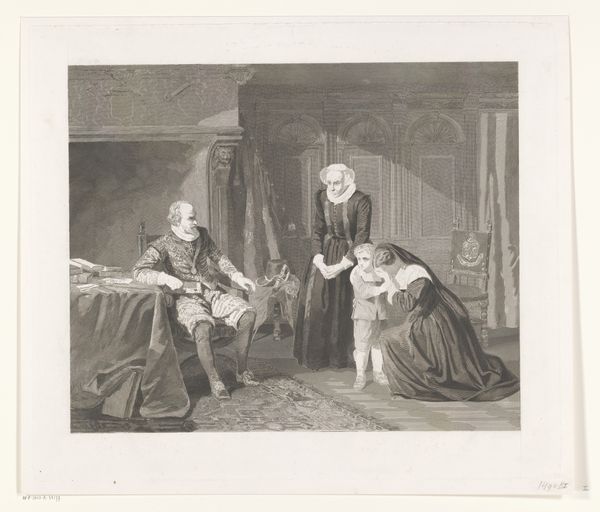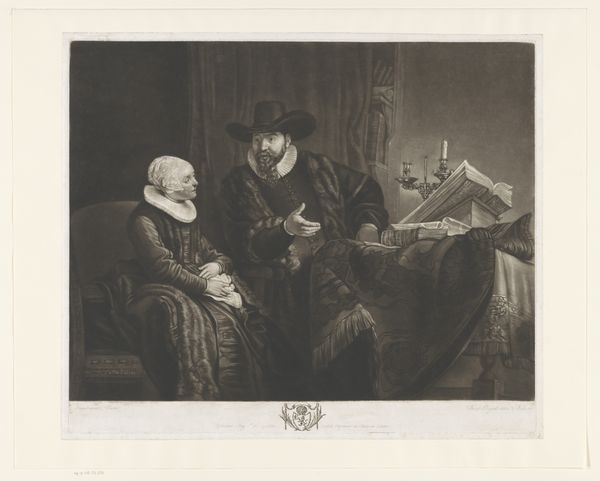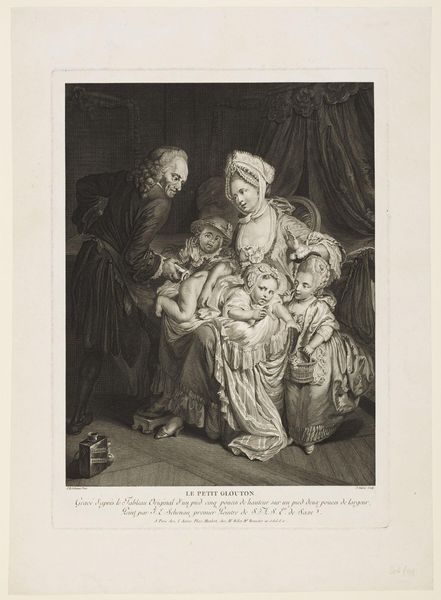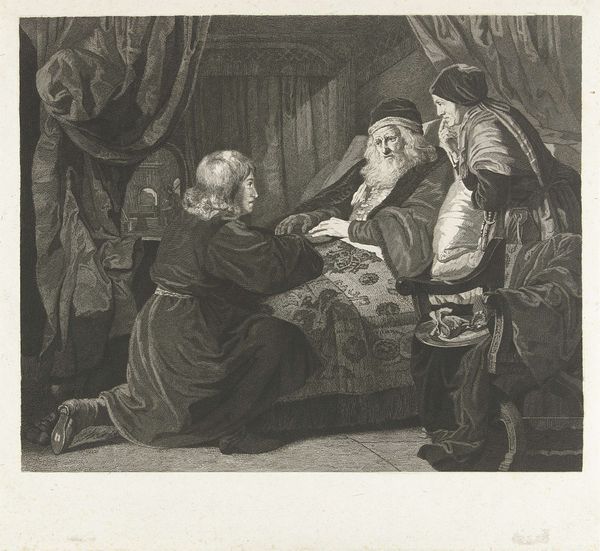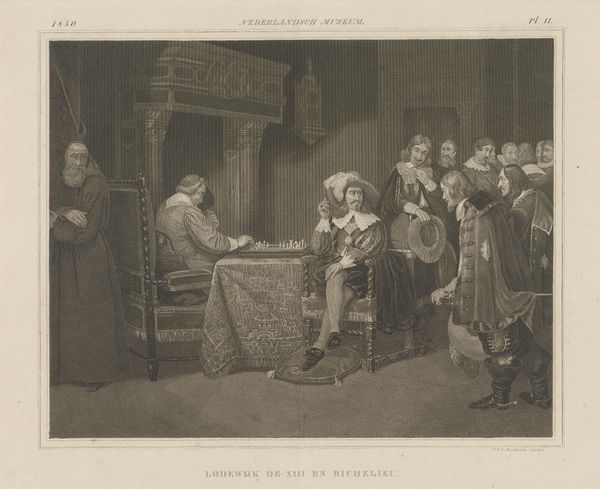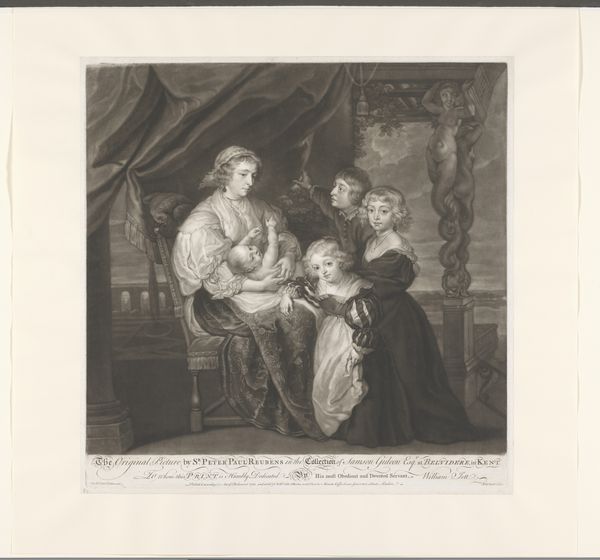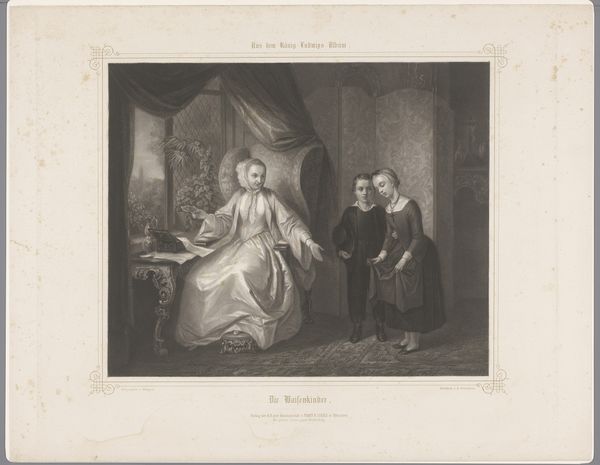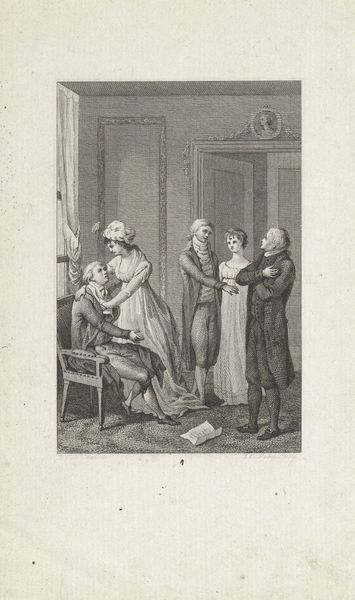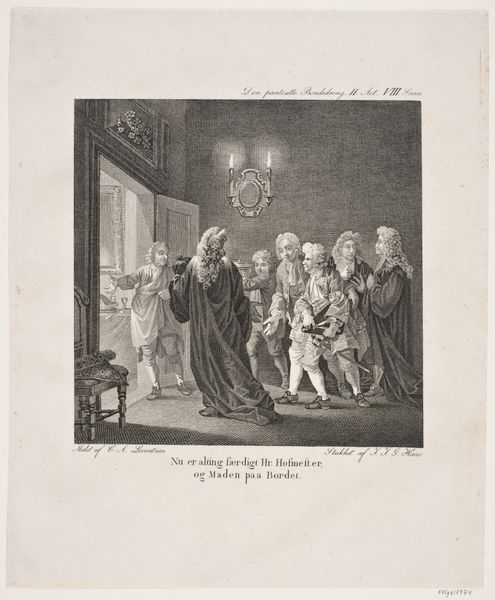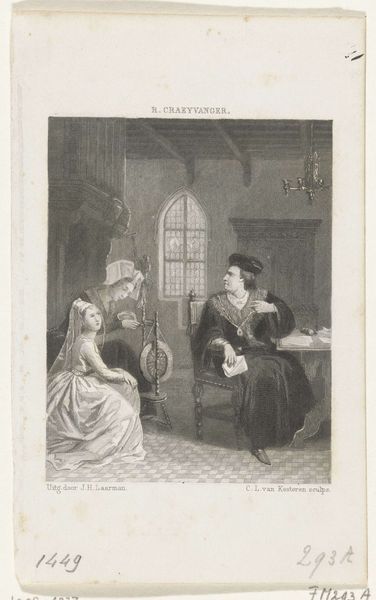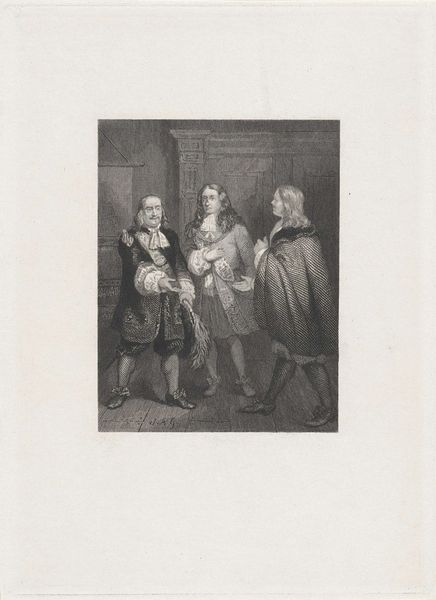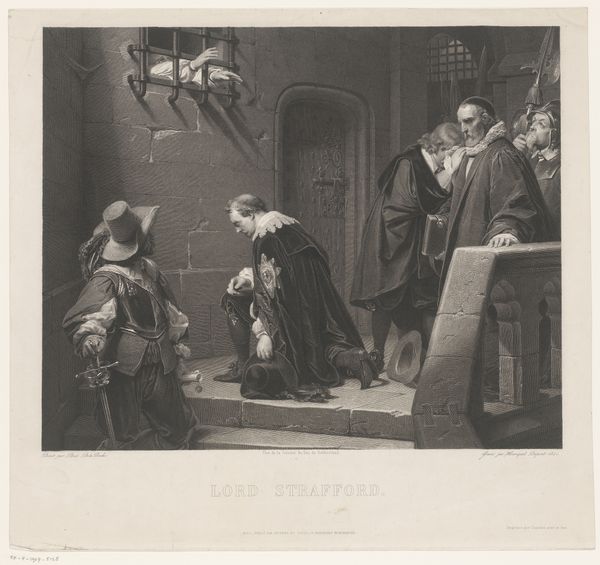
De moeder, vrouw en zoon van Reinier van Oldenbarnevelt smeken Maurits om genade, 1623 1861 - 1863
0:00
0:00
Dimensions: height 150 mm, width 147 mm
Copyright: Rijks Museum: Open Domain
Curator: This is "De moeder, vrouw en zoon van Reinier van Oldenbarnevelt smeken Maurits om genade, 1623", or "The mother, wife, and son of Reinier van Oldenbarnevelt beg Maurits for mercy, 1623". It's an engraving, a print, created by Jan Frederik Christiaan Reckleben between 1861 and 1863. Editor: The overwhelming sense is one of sorrow, created through very subtle manipulations of light and shadow. The somberness hangs heavily, doesn’t it? Curator: Indeed. Notice how Reckleben employs precise lines to delineate form, creating a sense of gravity befitting a historical scene. The composition is quite interesting. It places Maurits, the authority figure, to the left, separated from the supplicants, further isolating him in that almost austere Baroque interior. Editor: Absolutely. Consider the symbolism of the kneeling figures, this clear motif of supplication and desperation, echoing through art history. The woman shielding her face suggests shame, sorrow, grief - universal themes, right? We're not just seeing a historical moment but tapping into a very familiar sense of humanity under duress. Curator: The print medium itself holds symbolic weight. As a reproductive medium, engraving disseminates and perpetuates specific narratives, particularly regarding power dynamics and morality. Editor: Right! And it reinforces archetypes of power and vulnerability that still resonate culturally today, like authority or the ideal of family. And in the image’s very design, we see cultural values visually encoded. Curator: Note that the light source illuminates the faces of the mother and son, which makes it so compelling, whereas Maurits remains partially in shadow. Could this detail indicate the artist's commentary on the perceived moral righteousness of their cause, that his cold judgement and resolve are more shadowed? Editor: A visual choice reinforcing moral judgements? Precisely the power of iconic representation at work! These enduring symbols and human expressions carry a potent cultural memory. Curator: In studying Reckleben's formal choices, we also gain valuable insights into how nineteenth-century artists engaged with historical subject matter and also with contemporary political debates. Editor: And that's a beautiful reminder: it’s often within such seemingly simple works where complex cultural dialogues quietly play out. Thank you for the insights!
Comments
No comments
Be the first to comment and join the conversation on the ultimate creative platform.
